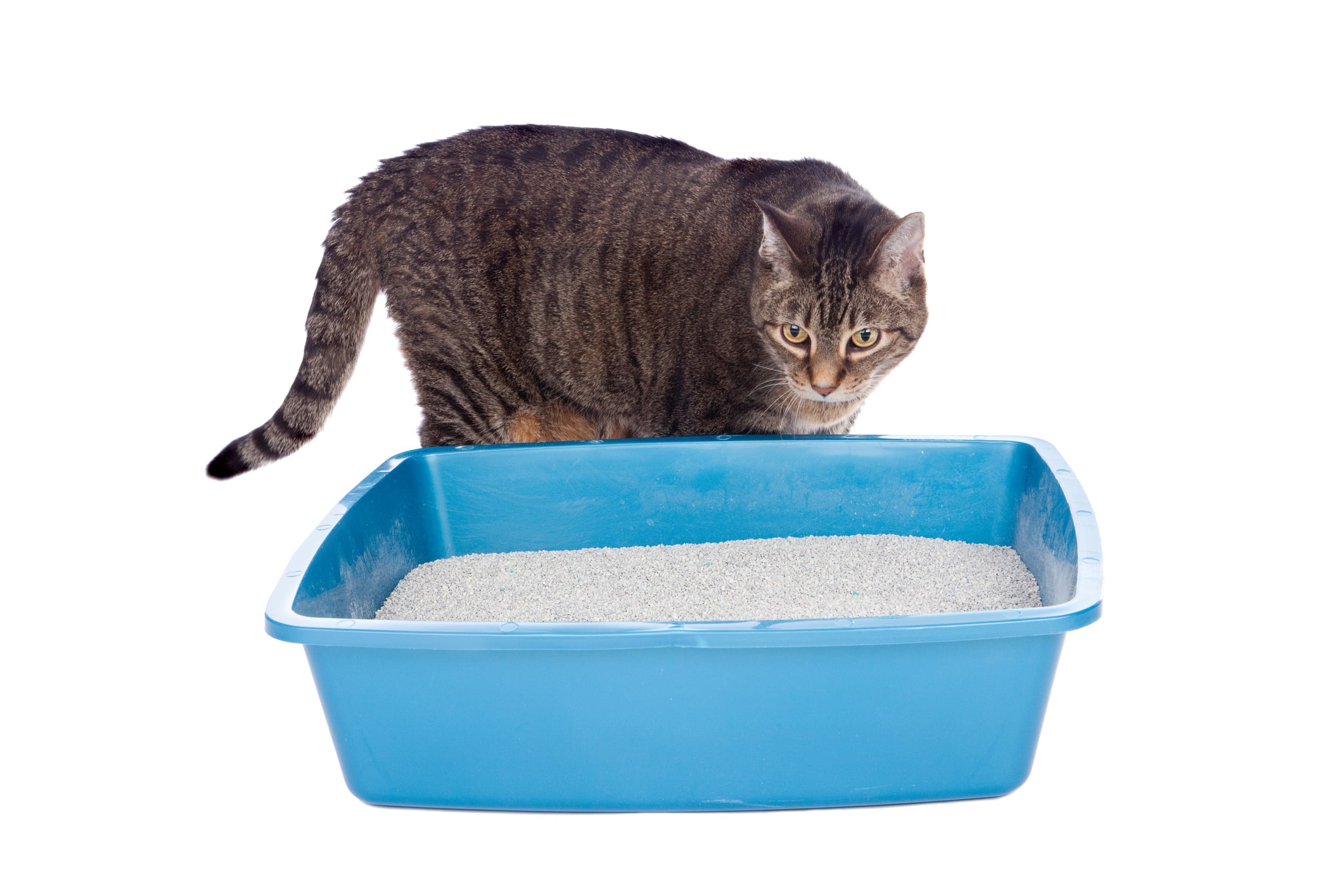Why Do Cats Stop Using their Litter Box?
If your cat is pooping outside the litter box, it can signal a problem. With a little detective work, you can solve any litter box issues and get your cat feeling better and doing their business where it belongs.
A common reason for a cat pooping outside the litter box is change. Cats are creatures of habit, so if you have just moved to a new home, changed the location of the litter box, changed the litter box itself or the type of litter, your cat may have some difficulty adjusting.
If your cat is not using the litter box, take heart. Any cat can have the occasional accident, especially if there is something new or stressful. Many times, however, a previously litter-trained cat who starts pooping outside the litter box has an underlying issue that you will need to deduce.
What to Do If Your Cat is Pooping Outside the Litter Box
Should you come across your cat going outside the litter box, pick them up gently and deposit them in the box. Be calm and matter-of-fact about it. Be sure not to yell or pick up your cat by the scruff, or punish them. Doing so may cause your cat to associate the litter box with fear and punishment, and they may then avoid using it.
If you want to know how to train your cat to use the litter box, punishment, yelling, and rubbing their nose in their poop isn’t it. Gentle reminders of the litter box’s location and more importantly providing a litter box your cat wants to use are much more effective.
If there has been an accident, return to the soiled area and pick up the feces in a paper towel. Take it to the litter box and lay it on top. This will help reinforce where the poop belongs and provide a scent trail to find the litter box the next time. Use an enzyme-based cleaner such as Arm & Hammer™ Pet Stain & Odor Eliminator Plus OxiClean™ to clean up the spot. The odor must be neutralized, not just deodorized.
A black-light flashlight can help you find any areas of urine on the floor, baseboards, or carpets. Thoroughly clean urine-marked areas and cover them temporarily to keep your cat from returning there. Try placing a water bowl over the spot, since cats do not like to urinate where they eat and drink. You can also try some citrus scented cotton balls (e.g. lemon oil or lemon juice) placed at the area. Cats dislike citrus scent and should avoid returning to that spot.
If none of that works, move the litter box to that spot your cat has chosen. It doesn’t have to stay there permanently, but it’s a good option and stop-gap measure.
Now, put on your sleuthing hat and pick up your pipe. It’s time to determine what ails your kitty and would cause them to go outside their litter box.
Where You Place the Litter Box Matters
Cats prefer privacy when doing their business. You’ll need to find the right place in your house or apartment to put your litter box. If you have a kitten or an elder cat, you’ll want to put a litter box on each floor of your house so they don’t have to travel too far to find it. If you have multiple cats, you’ll need one box for each cat to avoid territorial disputes. Ideally, you’d have one more box than you have cats.
Put your litter box in a quiet location, away from high-traffic areas of your home and away from their food and water. Make sure your cat has access to the box at any time.
Choose a litter box location and leave it there. Moving your litter box around will confuse your cat and potentially cause them to urinate or defecate elsewhere.
Once your litter box is in its proper location, it’s time to teach your cat where the litter box is. Gently pick your cat up and place them in the litter box. Watch them for the next day or so, and if you notice them scratching, crouching, or looking like they need to eliminate, pick them up and deposit them in the box. Cats instinctually will dig in dirt to cover their urine and feces; litter mimics dirt and stimulates this reflex.
Pay attention, though. If your cat continues to prefer another place in the house to do their business, you haven’t found the root of the problem yet.
Keeping Your Litter Box Clean
Keeping your litter box clear of waste will keep your cats wanting to use it. You likely prefer a toilet that is clean and clear over one that has been used and not flushed. Your cat has similar preferences and may choose not to use a litter box that is full of its own waste.
There are two types of litter box cleaning to do: daily scooping and weekly cleaning.
Scooping the litter box is a daily activity to keep your cat healthy and litter box odor under control. Make it a habit, such part of your morning or bedtime routine. Check your local laws about proper pet waste disposal. Some localities require using biodegradable bags, while in many places you can reuse plastic grocery bags to contain your daily scoops.
Once per month, change the litter entirely by dumping any remaining litter and washing out the box. Do not use strong-smelling cleaners or bleach, which may repel your cat. Some disinfectants are even toxic to cats, so it’s best to use only hot water and mild, fragrance-free soap to clean the litter box.
Sweep up any litter that made its way outside the box and wipe down the floor before returning the clean litter box to its home. Refill it with three to four inches of fresh litter and you’re good to go! Remember, simply adding more litter is not an alternative to cleaning out the litter box with soap and water monthly.
Other Reasons Your Cat May Turn up His Nose at the Litter Box
If your cat has turned his nose up at your litter box, you may need to make some changes to make it more appealing. Reasons your cat might choose not to use the litter box include:
- The litter box was “dirty,” according to your cat. Scoop or clean it out more frequently. It may be time for a complete scrub and change.
- Your cat is turned off by the scent of the litter. Try switching to an unscented litter.
- Your cat doesn’t like the texture of your litter. Some cats are more particular than others. Some do not mind changing between clumping and non-clumping, crystal and pine, lightweight or pellets. Others prefer a single type of litter and disdain any substitutions.
- The harsh smell of the cleaning products you used to scrub the litter box bothers your kitten. Use only warm water and fragrance-free detergent. Cats upper respiratory systems can be sensitive.
- Your cat doesn’t like the litter box itself. Perhaps you tried a litter box with a lid in order to hide the box or control odor. Many cats, especially larger ones, don’t like lids on their litter boxes because it can make them feel nervous or trapped. Try removing the lid to see if that clears up the issue. Conversely, some cats feel too exposed using an open litter box. Try a lidded box and see if that helps.
- Your cat doesn’t like where the box is placed in your home. Try moving the box to a better location and remind your cat of its new spot.
- Your cat is turned off by too much litter in the box. Most cats prefer about three inches of litter – enough to cover their poop, but not enough to wallow in.
- The litter box is too small. You may have purchased the litter box when your cat was a wee biscuit, and now they are a hefty loaf. Your cat needs a litter box that is large enough for them to turn around in, without any parts of their body hanging over the sides. Getting a larger litter box may solve the problem.
Cats Not Using the Litter Box as a Sign of Illness
Going outside the litter box can also be a sign that your cat is sick. In particular, frequent urination, especially outside of the litter box, can signal a urinary tract infection or feline interstitial cystitis (inflamed bladder). If your cat continues to go outside the litter box, especially if you see them urinating frequently, it’s time for a visit to the veterinarian.
To prevent urinary tract troubles, make sure your cat has plenty of water to drink at all times. Also, consider giving them wet food once a day. In the wild, cats get almost all of their needed moisture out of their prey, but today’s kibbled dry food doesn’t provide the same amount.
The good news is that litter box troubles are usually temporary. Once you discover the underlying issue, you will be able to get your cat back on track. Whether it’s changing to a new type of litter or litter box, moving the box to a new location, keeping it more clean for fastidious felines, or treating a urinary tract infection, you’ll soon be back to a routine with your kitty.
Your cat is telling you that something is wrong when they go outside the box. Once that trouble is addressed, it’ll be back to pets, purrs, and playtime, without worry about poop time.



